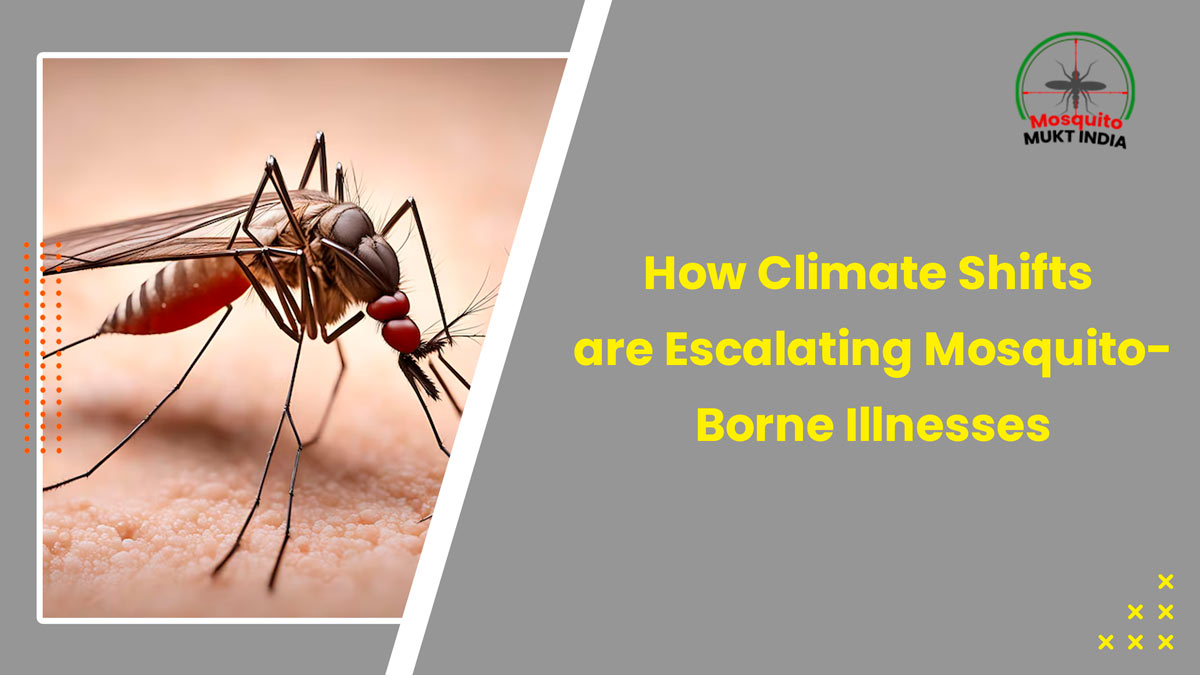
Climate change, with its unpredictable shifts in temperature, humidity, and rainfall, is becoming an increasingly influential factor in the rise of mosquito-borne illnesses worldwide. Diseases such as dengue, malaria, Zika, and chikungunya, which are transmitted by mosquitoes, are showing alarming increases in both their geographic spread and severity. This article explores how climate shifts are escalating these health threats and what it means for global public health.
Table of Content:-
The Connection Between Climate and Mosquitoes
Mosquitoes thrive in warm, humid environments. With global temperatures on the rise, regions that were once too cold to sustain mosquito populations are now becoming suitable habitats. This expansion allows mosquitoes to spread diseases to new areas, including those that previously had little or no history of mosquito-borne illnesses.
Increased rainfall in many regions, a consequence of climate change, creates more breeding sites for mosquitoes. Stagnant water, often left behind after heavy rains, is the perfect breeding ground for these insects. In contrast, in areas experiencing drought, people tend to store water in containers, which can also serve as breeding sites if not properly covered.
Also read: World Mosquito Day 2024: How is AI Helping In Tackling Mosquito-Borne Illnesses
Warming Temperatures and Disease Transmission

Higher temperatures shorten the incubation period of viruses within mosquitoes. For instance, the time it takes for the dengue virus to develop inside an Aedes mosquito decreases in warmer conditions. This means mosquitoes can transmit the virus sooner, leading to a quicker and more widespread outbreak of the disease.
Moreover, warmer climates can extend the breeding season of mosquitoes, allowing them to reproduce and spread diseases over a more extended period each year. Regions that previously only experienced mosquito activity during certain seasons are now witnessing year-round infestations.
The Impact on Human Populations
The spread of mosquito-borne illnesses into new regions poses a significant public health challenge. Populations in these areas may have little immunity to diseases like dengue or Zika, making them more vulnerable to severe outbreaks. Health systems in these regions may also be unprepared to handle the sudden influx of cases, leading to higher mortality rates.
In addition to health impacts, there are economic consequences. Malaria alone costs Africa an estimated $12 billion annually in lost productivity. As mosquito-borne illnesses spread, these costs are likely to rise, placing an even greater burden on already struggling economies.
Also read: Bitten By A Mosquito? Here’s How You Can Identify West Nile Virus

Urbanisation and Its Role
Urbanization, another consequence of human-driven environmental changes, also plays a role in the spread of mosquito-borne diseases. Rapidly expanding cities, particularly in tropical regions, often lack adequate infrastructure to manage waste and water. Poor sanitation and standing water in urban slums create ideal conditions for mosquitoes to breed, leading to increased disease transmission.
Mitigation and Adaptation Strategies
Addressing the rise in mosquito-borne illnesses requires a multifaceted approach. Public health initiatives must focus on both prevention and treatment. Vector control measures, such as the use of insecticides, mosquito nets, and the elimination of breeding sites, are critical in reducing the mosquito population. Additionally, early detection and treatment of diseases can help prevent outbreaks from spreading.
On a broader scale, efforts to combat climate change are essential in the long-term fight against mosquito-borne illnesses. Reducing greenhouse gas emissions, improving water management, and developing climate-resilient infrastructure can help mitigate the environmental changes that are driving the spread of these diseases.
Conclusion
The link between climate change and the rise of mosquito-borne illnesses is clear. As global temperatures continue to rise and weather patterns become more unpredictable, the spread of these diseases is likely to worsen. To protect public health, it is crucial that we address both the immediate needs of those affected by these illnesses and the underlying environmental factors contributing to their spread. By taking a proactive approach, we can reduce the impact of mosquito-borne diseases on vulnerable populations worldwide.
Also watch this video
How we keep this article up to date:
We work with experts and keep a close eye on the latest in health and wellness. Whenever there is a new research or helpful information, we update our articles with accurate and useful advice.
Current Version